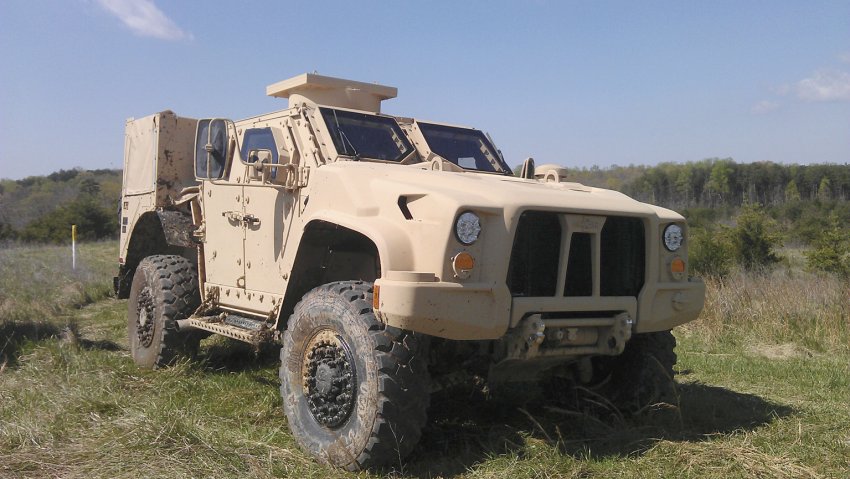
As the US Army weighs possible Joint Light Tactical Vehicle (JLTV) requirement changes before making a full-rate production decision, Oshkosh Defense has said it has already addressed several technical challenges raised in a recent Pentagon test and evaluation report.
In a series of emails to Jane’s , the company discussed the army’s decision to delay its intended December 2018 full-rate production decision, as well as findings in the Pentagon’s Director, Operational Test and Evaluation (DOT&E) fiscal year 2018 annual report.
“We understand that the government desires to assess a few potential changes to vehicle requirements and features before they formalize full-rate approval,” Oshkosh wrote. “We’re working closely with the army, and they have told us to expect the decision to come in the early spring or summer.”

The US Army has delayed a JLTV full-rate production decision to weigh potential requirement changes, according to Oshkosh. (Daniel Wasserbly/IHS Markit)
The service did not respond to questions about the production decision nor the recent DOT&E report, which detailed several JLTV problems. For example, the Pentagon’s chief weapons testing office said that while the General Purpose Heavy Guns Carrier and Utility JLTV variants “are operationally effective” for combat and tactical missions, the Close Combat Weapons Carrier (CCWC) variant “is not” effective for these missions. The report noted that the CCWC variant “provides less capability to engage threats with the tube-launched, optically tracked, wire-guided (TOW) missiles over the fielded [Humvee]” and that crews face a “slow and difficult” missile reloading process.
George Mansfield, Oshkosh’s vice-president and general manager for joint programmes, said that while the company has met its contractual requirements and specifications, it is modifying the CCWC variant.
Looking to read the full article?
Gain unlimited access to Janes news and more...






